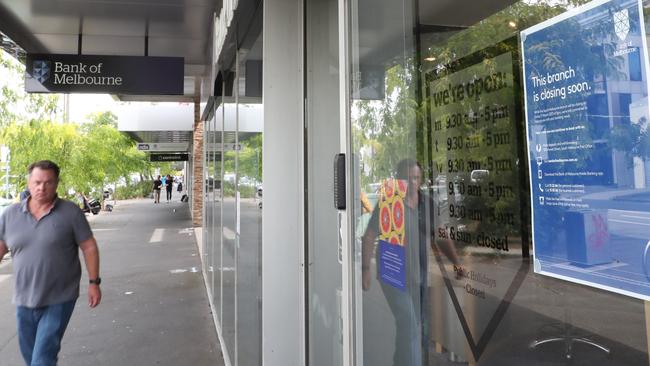
Treasury is said to be consulting on various measures that would result in payments flowing between banks, but more specifically from banks with a smaller presence in rural and regional Australia to those that are better represented.
A minimum service level is among options being considered, alongside having specific requirements around branch closures.
It’s clear physical banking service levels and branch numbers have tumbled in recent years as digital take-up has accelerated. Some 2334 branches have disappeared since mid-2017, leaving about 3360 across the nation, data from the prudential regulator shows. There are just 39 branches remaining in very remote areas, almost half the level in 2017, and 91 branches in places deemed remote.

Despite that data, any redistribution of revenue or levy-type arrangements on banks would prove difficult to implement and prone to unintended consequences. The big four banks and Macquarie are already subject to a tax of 0.06 per cent applied to players with liabilities of more than $100bn, excluding products such as consumer deposits of up to $250,000.
That tax – imposed on top of normal tax obligations in mid-2017 – collects between $1.45bn and $1.6bn annually.
Perhaps the government needs to think a little more outside the box for potential solutions.
In New Zealand, regulators have sought a further three-year assurance from the five largest banks to not close any regional branches, after a banking hub model was trialled. The hub model essentially set up shared branches between the specific banks operating in towns, allowing an employee from each player to be available on site for a few hours on separate weekdays.
Given Australian banks dominate New Zealand’s market, they know the trial well.
Following the experiment most of the branch hub network will remain in place, even though it showed in some locations customer use for a multi-bank hub was lower than many single-brand branches.
It’s certainly worth Treasury assessing a range of models and taking the pulse of regional and rural communities before forging ahead with any revenue distribution or new bank levy plan.
Opposition treasury spokesman Angus Taylor over the weekend criticised Treasury’s confidential proposals, arguing the government didn’t understand regional Australia or banking.
“The fact that the government is resorting to political stunts to try to convince Australians they haven’t failed to manage the economy shows how panicked it is,” Taylor said. “Regional Australians have a right to expect access to financial services, but this is just another thought bubble from a desperate government which is incapable of competently managing the economy.”
A fulsome consultation is certainly required.




Against the spectre of a further decline in rural and regional banking services, particularly branches but also ATMs, Treasury and the federal government must tread carefully on any market intervention to reward players that have larger branch footprints.